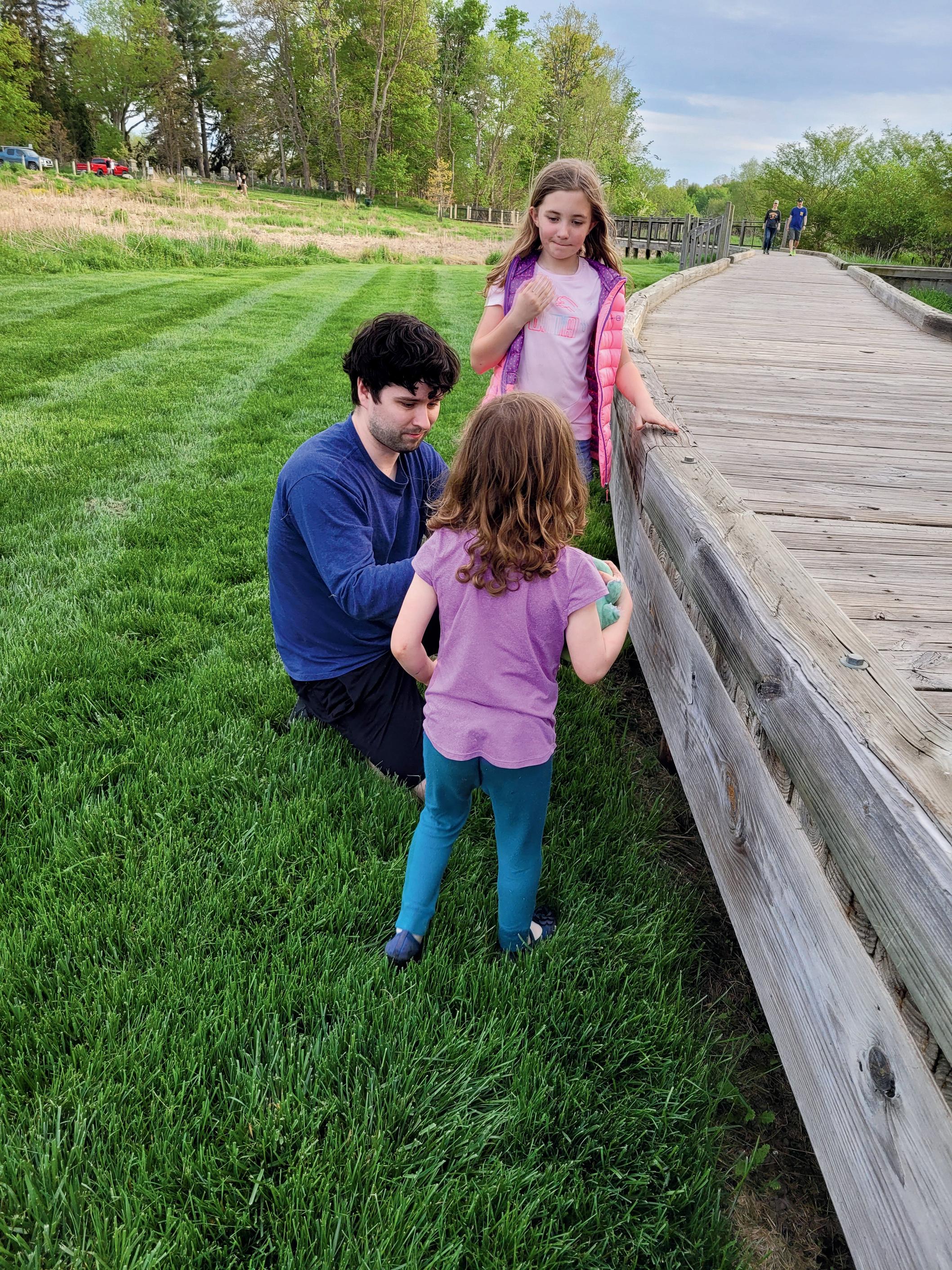
4 minute read
X Marks the Spot
Written by Shawn Personke, Chelsea resident
Treasure hunting has been around for hundreds of years. Robert Louis Stevenson’s tales of buried gold and archaeologist Howard Carter’s discovery of King Tut’s tomb may have inspired generations of treasure hunters.
Nowadays, treasure hunts have taken on a modern twist, thanks to GPS, cell phones, and some good old-fashioned enthusiasm.
Dexter resident Laura Preston started geocaching in the early days of Covid to get out of the house with her two kids. “It’s been such a fun activity to do with them,” she said. “It got us away from the screens and on an outdoor adventure.”
But what is geocaching? According to Geocaching.com, it’s “the world’s largest treasure hunting game.” By using a geocaching app and/or a GPS device, as well as other hints and clues, the hidden treasures are found. And once found, finders sign the paper log (hidden within the cache). Then, the treasure is returned to its hiding spot … for the next seeker to discover.
There are over 3 million hidden treasures waiting to be discovered in the great outdoors around the world, with over 2,000 in Washtenaw County. Grass Lake maintains ten, thanks to a grant from the 5HF and the Grass Lake Community Wellness Initiative.
What’s in these buried treasures? And how are they created and hidden? Many who geocache are also geocache creators. Geocaches can be any size and shape. They often contain coins, trinkets, buttons, pins, craft items, and patches. They can house anything, but must contain a log inside the container for each finder to sign. Sometimes they contain items to trade.
Preston says that you never know what you’ll find. “The craziest geocache I found was at a rest stop on the way to Florida,” Preston recalled. “To break up the long drive, my family and I were looking for geocaches along the way. The geocache along I-75 led me into a giant storm drain. It felt like I was in Harry Potter, exploring the pipes for the Basilisk!”
If you take an item, you leave an item in trade. But in the end, the cache and container are always left for the next treasure hunter.
Grass Lake resident and geocacher Sabrina Edgar said it’s a great way to learn geography skills and a family friendly activity.
“They are everywhere, which makes them easy to incorporate into non-related activities,” said Edgar. “Like when we are traveling and taking a break. Instead of just a stop at a rest area, there are often caches to seek which make the break more interesting. It’s a fun way to record our travels.”
She added that searching is sometimes easy and sometimes so difficult that they cannot find them. “This variability is fun and the puzzling nature of the find is a great challenge.”
Anne Garman has been a treasure hunter since 2004. She’s hunted in over 40 states, every county in Michigan, and in seven countries. And that was before cell phones.
“My 12-year-old son had a friend whose dad used a Garmin ‘global satellite position receiver,’ and he offered to let me use it.”
And then, coincidentally, the Ann Arbor News ran a story about the head of the Michigan Geocaching Organization. After a bit of research, Garman discovered the nearest geocache was actually in Chelsea’s TimberTown Park.
“I was such a techno dweeb at the time that my son had to show me how to put coordinates in it,” she said. “Then we went out into the woods and discovered a large container hidden! We signed the log book and I was hooked.”
Garman said it’s fun as a group activity, too. She’s taught countless groups and individuals the basics of geocaching. Online communities provide the opportunity to connect with others who share this passion.
On July 30, the Michigan Geocaching Organization will hold Camp MiGO Christmas in July, an open to the public event from 5:30 to 7:30 at TimberTown Park. For more information about the event or the sport, visit www.mi-geocaching.org










